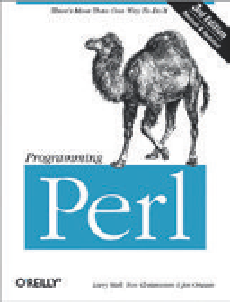Information Technology Reference
In-Depth Information
A major characteristic of modern scripting languages is their interactivity,
sometimes referred to as a
REPL
programming environment. REPL stands for
“Read-Eval-Print Loop” and has its origins in the early work on LISP at MIT. When
a user enters an expression, it is immediately evaluated and displayed. In this
sense, scripting languages behave as if they were “interpreted,” meaning that
they operate on an immediate line-by-line execution basis. This is in contrast to
traditional “compiled” languages, which generate a binary object file that needs
to be explicitly linked to the required set of program libraries - the traditional
“edit-compile-link-run” cycle of programming. Because of the increasing power
of today's computer chips, the ease of use of scripting languages is often more
important than the increase in program efficiency that can be achieved with a
compiled language. For example, in scripting languages, to minimize the com-
plexity of programs, declaration of variable types to designate the sort of informa-
tion each variable can contain is often optional. The variable types are declared
implicitly by their usage context and initialized to be something sensible when
first used. However, as scripting language programs have become longer and
more complex, the benefits of type declarations have been recognized, and most
scripting languages now provide an option to make explicit type declarations.
The development of Perl (Practical Extraction and Report Language) in the
late 1980s (
B.4.11
) was one of the defining events in the evolution of scripting
languages (
Fig. 4.12
). David Barron in his topic
The World of Scripting Languages
remarks that:
Fig. 4.12. A guide to programming in
Perl by its creator, Larry Wall, with Tom
Christiansen, and Jon Orwant, widely
known as the “Camel” topic.
Perl rapidly developed from being a fairly simple text-processing language to
a fully-featured language with extensive capabilities for interacting with the
system to manipulate files and processes, establish network connections and
other similar system-programming tasks.
25
From its origins in the Unix world, Perl scripts are now able to run unchanged
on all the popular operating system platforms. Other popular scripting lan-
guages are VBScript (Visual Basic Scripting Edition) for the Microsoft platform
and JavaScript for web applications. The characteristics of ease of use and
immediate execution with a REPL environment are sometimes taken as the
definition of a scripting language. Under this definition, the Python program-
ming language, which is growing rapidly in popularity, would be regarded as a
scripting language.
B.4.11. Larry Wall developed Perl in 1987 as a general-purpose Unix scripting language. Since
then both the portability and the features in Perl have been expanded greatly and now include
support for O-O programming. It is one of the world's most popular programming languages.
Wall continues to oversee the evolution of Perl and his role is summarized by the so-called
2
Rules
, taken from the official Perl documentation:
1. Larry is always by definition right about how Perl should behave. This means he has final veto
power on the core functionality.
2. Larry is allowed to change his mind about any matter at a later date, regardless of whether he
previously invoked Rule 1.


Search WWH ::

Custom Search